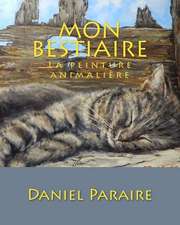Horse Mandalas/Mandala Horses: Coloring and Design Book
Ilustrat de Miriam Nieuwe Wemeen Limba Engleză Paperback – 8 oct 2012
As the author writes in the introduction, “Horses are inspiration on four legs. If you have ever seen a horse galloping towards freedom with his head held high and his nostrils wide open, you know that you will never forget that image.”
Meanwhile, designing and coloring mandalas is an activity that has been around for centuries.
The 46 original designs in this charming coloring book bring together the inspiration of horses — their beautiful lines, thrilling movement and sense of freedom — with the centering esthetic and timeless beauty of mandalas. Author, illustrator, and horse trainer Miriam Nieuwe Weme created these patterns using images of horses and the traditional rotational symmetry of the mandala design. Some of the horse mandalas are complex and intricate, others are simpler, awaiting the addition of reader’s own embellishments and creativity.
Miriam Weme has loved horses since she was a little girl. Creating the mandalas featured in this book was a profoundly comforting and inspirational experience for her, and she hopes readers/artists interacting with the book will have the same experience as they color them in and make them their own.
Whether horse enthusiast, budding artist, adult or child, this coloring and design book gives readers an opportunity to bring out colored pencils and paints and let these unique mandalas take them on a wonderful journey!
Meanwhile, designing and coloring mandalas is an activity that has been around for centuries.
The 46 original designs in this charming coloring book bring together the inspiration of horses — their beautiful lines, thrilling movement and sense of freedom — with the centering esthetic and timeless beauty of mandalas. Author, illustrator, and horse trainer Miriam Nieuwe Weme created these patterns using images of horses and the traditional rotational symmetry of the mandala design. Some of the horse mandalas are complex and intricate, others are simpler, awaiting the addition of reader’s own embellishments and creativity.
Miriam Weme has loved horses since she was a little girl. Creating the mandalas featured in this book was a profoundly comforting and inspirational experience for her, and she hopes readers/artists interacting with the book will have the same experience as they color them in and make them their own.
Whether horse enthusiast, budding artist, adult or child, this coloring and design book gives readers an opportunity to bring out colored pencils and paints and let these unique mandalas take them on a wonderful journey!
Preț: 86.36 lei
Nou
Puncte Express: 130
Preț estimativ în valută:
16.53€ • 17.67$ • 13.78£
16.53€ • 17.67$ • 13.78£
Carte disponibilă
Livrare economică 28 martie-11 aprilie
Preluare comenzi: 021 569.72.76
Specificații
ISBN-13: 9780897936347
ISBN-10: 0897936345
Pagini: 54
Ilustrații: B&W illustrations throughout
Dimensiuni: 213 x 277 x 13 mm
Greutate: 0.34 kg
Editura: Hunter House Publishers
ISBN-10: 0897936345
Pagini: 54
Ilustrații: B&W illustrations throughout
Dimensiuni: 213 x 277 x 13 mm
Greutate: 0.34 kg
Editura: Hunter House Publishers
Notă biografică
Miriam Nieuwe Weme has been an editor for Amazone magazine, an equestrian publication in the Netherlands. She also wrote and illustrated the successful book The Art of Natural Dressage (Vrijheidsdressuur), which emphasizes positive techniques for training horses. Weme has been fascinated with horses since she was a child, and currently owns two Shetland ponies, Blacky and Sjors.
Extras
Some coloring tips from the Introduction:
Mirrors Of the Soul
I like horses best ‘au naturel’, without a bridle or head collar. That is the reason I depicted them this way in the mandalas. Some of the horses do not have their eyes filled in yet. The eyes of a horse are also known as the mirrors of the soul. You can add their expressions yourself, if you wish to: look at the other mandalas to see the different expressions in the horses’ eyes and discover what you want your horse to express. You will find out that a stylized horse’s eye is not so hard to draw. Often, it is made up of not more than two lines that create a triangle - and yet, you can recognize an eye in there. Follow your imagination and make your mandala as personal as you want!
Coloring the Mandalas
The most important feature of a traditional mandala is its rotational symmetry. If you cut out a pizza slice, you will notice that the image on that slice is repeated throughout the entire mandala. The symmetry and repetition have a calming and meditative effect, so mandalas are often colored in as symmetrically as possible.
However, if the same horse is featured in a mandala eight times, it does not mean that all eight horses have to be colored in the same. You can use alternating colors and thus keep the symmetry, but nobody will forbid you to give them all a different color!
It is a good thing to be aware of tradition, but your mandala belongs to you first and foremost and it is up to you to decide how to color it in.
Tips
You can use crayon or pen to color the mandalas, but you can also use watercolor or other types of paint. Here are a few tips to get you started:
If you want to add a detail to the drawing, for instance an eye or head collar, make a rough sketch with pencil and then trace the lines with a black pen. You can then erase the pencil lines. This way, your additions will be indistinguishable from the original drawing.
Put a sheet of paper underneath the mandala you want to color in: this is to prevent stains or scratches on the drawing underneath.
The great advantage of watercolor paint is that it is transparent, so the black lines underneath stay visible. If you use an opaque paint, such as acrylic, make sure to stay in the lines when coloring - that is, if you want to still be able to see the lines!
If you use watercolor, remember that paper tends to wrinkle when it gets wet. Place the mandala between two sheets of paper when it is still wet and then place it underneath a thick book or another heavy object and leave it to dry for a couple of hours. This will prevent the mandala from being wrinkled when it has dried.
Mandalas can be shared: you can surprise other people with a small, colored mandala on a card!
Mirrors Of the Soul
I like horses best ‘au naturel’, without a bridle or head collar. That is the reason I depicted them this way in the mandalas. Some of the horses do not have their eyes filled in yet. The eyes of a horse are also known as the mirrors of the soul. You can add their expressions yourself, if you wish to: look at the other mandalas to see the different expressions in the horses’ eyes and discover what you want your horse to express. You will find out that a stylized horse’s eye is not so hard to draw. Often, it is made up of not more than two lines that create a triangle - and yet, you can recognize an eye in there. Follow your imagination and make your mandala as personal as you want!
Coloring the Mandalas
The most important feature of a traditional mandala is its rotational symmetry. If you cut out a pizza slice, you will notice that the image on that slice is repeated throughout the entire mandala. The symmetry and repetition have a calming and meditative effect, so mandalas are often colored in as symmetrically as possible.
However, if the same horse is featured in a mandala eight times, it does not mean that all eight horses have to be colored in the same. You can use alternating colors and thus keep the symmetry, but nobody will forbid you to give them all a different color!
It is a good thing to be aware of tradition, but your mandala belongs to you first and foremost and it is up to you to decide how to color it in.
Tips
You can use crayon or pen to color the mandalas, but you can also use watercolor or other types of paint. Here are a few tips to get you started:
If you want to add a detail to the drawing, for instance an eye or head collar, make a rough sketch with pencil and then trace the lines with a black pen. You can then erase the pencil lines. This way, your additions will be indistinguishable from the original drawing.
Put a sheet of paper underneath the mandala you want to color in: this is to prevent stains or scratches on the drawing underneath.
The great advantage of watercolor paint is that it is transparent, so the black lines underneath stay visible. If you use an opaque paint, such as acrylic, make sure to stay in the lines when coloring - that is, if you want to still be able to see the lines!
If you use watercolor, remember that paper tends to wrinkle when it gets wet. Place the mandala between two sheets of paper when it is still wet and then place it underneath a thick book or another heavy object and leave it to dry for a couple of hours. This will prevent the mandala from being wrinkled when it has dried.
Mandalas can be shared: you can surprise other people with a small, colored mandala on a card!






